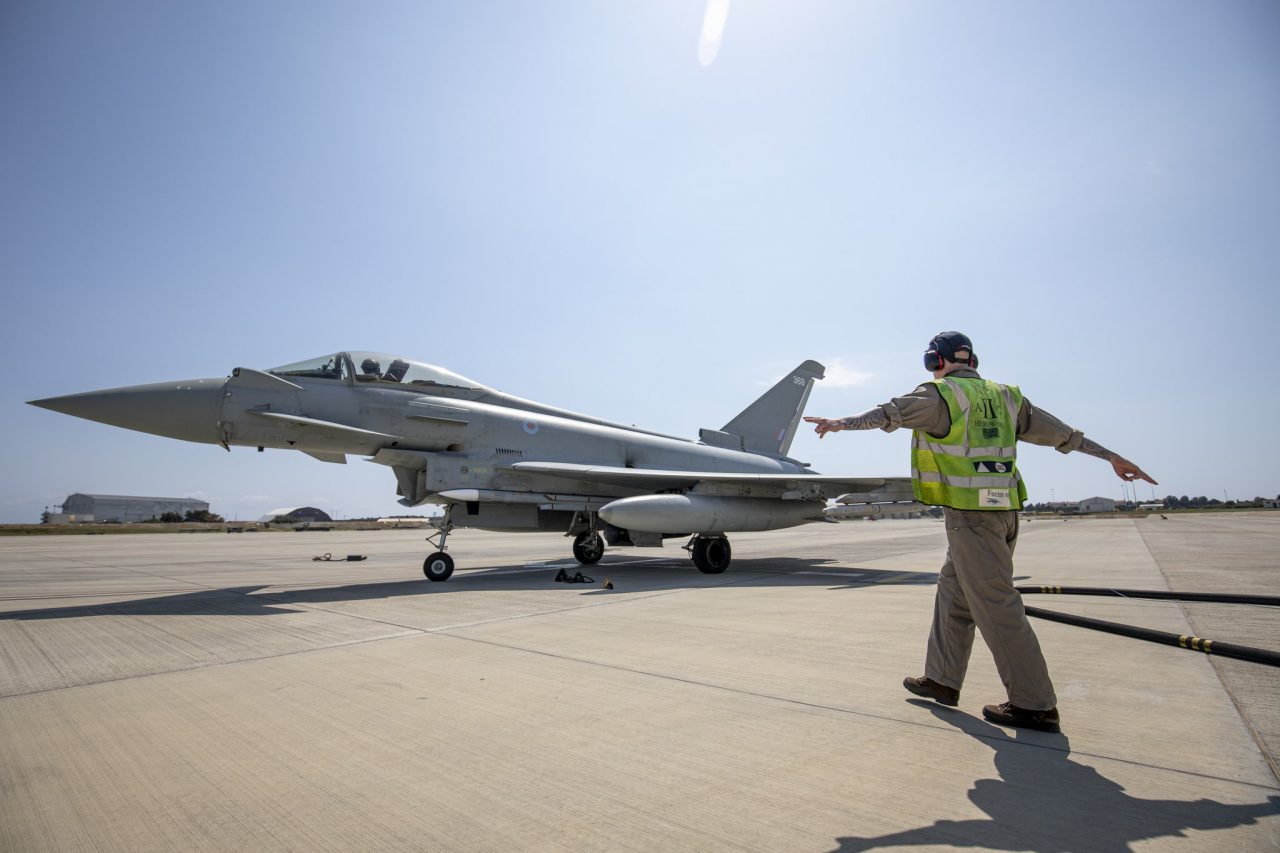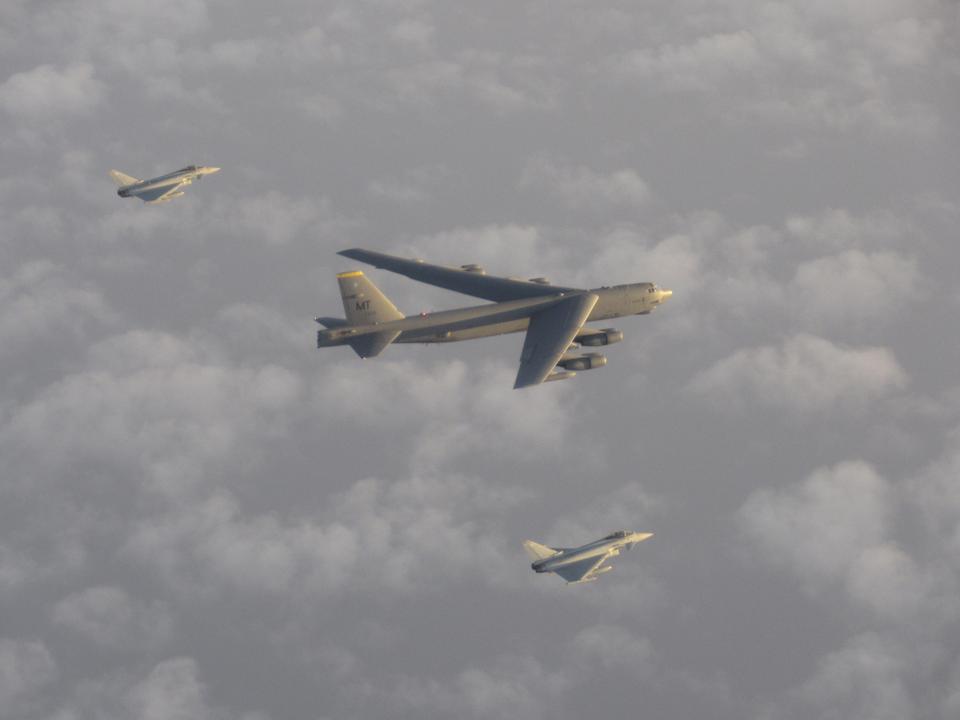As the attention of the global media remains fixated on the Russian invasion of Ukraine, President Putin is trying to open up another front against NATO in the Middle East and Africa.
“It’s threatening NATO from below,” Kristina Kausch, a European security expert at the German Marshall Fund think-tank said about Russia’s goals in the Middle East and Africa.
“The Russians have felt encircled by NATO – and now they want to encircle NATO,” she said.
The U.K. Royal Air Force’s (RAF’s) Eurofighter Typhoon of the 903 Expeditionary Air Wing (EAW) based at RAF Akrotiri in Cyprus recently conducted ‘hot pit refueling’ during a sortie conducting NATO Air Maritime Integration over the Eastern Mediterranean.
The hot pit refueling is an important part of NATO’s ability to deliver decisive airpower from several dispersed locations which could be of paramount importance in any future conflict with a peer adversary, such as Russia.
Hot pit refuelling is where the Typhoon engines remain running during the refuelling process. ✈️
This enables the jets to resume activity quickly, increasing effectiveness and agility in sustained @DefenceOps.#83EAG #903EAW pic.twitter.com/nMxT5IanFP
— Air Cdre Mark Farrell (@UKACCMiddleEast) April 5, 2022
The first time British Eurofighter Typhoon jets tested the hot pit refueling capability was on July 15, 2021, in Norway
This training event took place in Bodø Main Air Station in northern Norway above the Arctic Circle and involved an undisclosed number of Typhoons assigned to No 2 Squadron from RAF Lossiemouth in Scotland.
Hot Pit Refueling
Hot pit refueling involves fueling an aircraft immediately after landing, while the aircraft keeps one engine running to reduce response time and keep the aircraft ready to complete any mission anywhere.
Normally, the aircraft would shut the engines down which will be followed by engine checks, fuelling, and then taking off from the ground again. The after-flight checks can take hours and what hot pit refueling accomplishes is cutting down the time to about an hour.

The running engine provides power to the jet and additionally acts as a source of air so when relaunching, the aircrew has a reliable air source to restart the remaining engines immediately after ground refueling is complete. This allows the aircraft to take off in a shorter time.
According to various estimates, it can take anywhere between 4 to 6 hours for maintenance to perform their after-flight inspections, ready the jet for refuel followed by another set of checks before getting the jet ready for the next mission.
Apart from shortening the time it takes to turn each aircraft, hot pit refueling also strengthens capabilities and locations that the aircraft can be dispatched to because of not having to completely shut off engines or restart them.
So, hot pit refueling enables an aircraft, in this case, the British Eurofighter Typhoon to land in an area where the aircraft type is not prevalent and can refuel without worrying about issues such as a long time to service, due to a lack of parts and maintenance experience.
The idea is that if required, Typhoons should be able to rapidly disperse to other bases, probably those of NATO allies elsewhere, refuel on arrival, and then immediately launch operations.
This could be put to use in response to a certain situation that may flare up in another country, or otherwise to disperse the RAF Typhoon fleet away from its two main operating bases in the U.K., Coningsby, and Lossiemouth if they come under threat.
“…re-finding our ability to disperse and operate in a more expeditionary way [that] makes life harder for those who look at our home base and think that we’re sunk if missiles hit Lossiemouth, Coningsby, and Marham,” said U.K. Minister for the Armed Forces James Heappey said last year during his address at the Global Air Chiefs’ Conference.
In February, Russian armed forces conducted military drills in the Mediterranean, involving 15 warships and about 30 aircraft to demonstrate the Russian military’s capability to threaten the U.S. carrier strike group in the Mediterranean.
This was the largest military drill by Russia since the Cold War overseen by Defense Minister Sergei Shoigu himself ahead of the Russian military assault in Ukraine.
Russia’s Hmeimeem air base has served as the main outpost for Moscow since September 2015 to launch attacks on ISIS strongholds and other rebel forces in Syria who oppose Bashar-al Assad’s government.
According to Ibrahim Hamidi, a Syrian journalist and senior diplomatic editor for Syrian affairs at the London-based Asharq al-Awsat newspaper, Russia’s Hmeimeem air base on Syria’s Mediterranean coast is “an integral part of Russia’s defense strategy not just in the Middle East but all the world.”
In light of these developments, NATO is taking steps to step up its presence in the Mediterranean to secure itself by matching up to the Russian forces in the region and deterring President Putin from further adventurism.

The RAF Akrotiri with fourth-generation multi-role Typhoons has so far served as a forward base for NATO’s counter-ISIS missions in the Middle East.
In late March, Typhoon FGR4s from RAF Akrotiri escorted a United States Air Force B-52 Stratofortress bomber over the Eastern Mediterranean as it flew through the region to conduct a presence patrol mission across central Europe and the Middle East.
“Regular training and integration missions with our NATO partners enable our forces to maximize our ability to project combined strength and enhance regional stability”, said Wing Commander Sparky Dunlop, the Commanding Officer of 903 EAW.
- Written by Tanmay Kadam/EurAsian Times Desk
- Contact the author at etdesk@eurasiantimes.com
- Follow EurAsian Times on Google News




